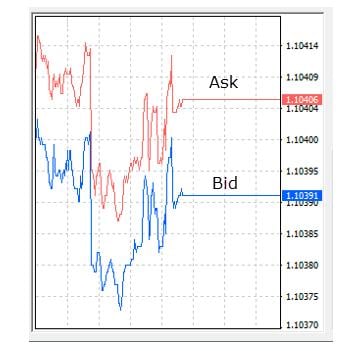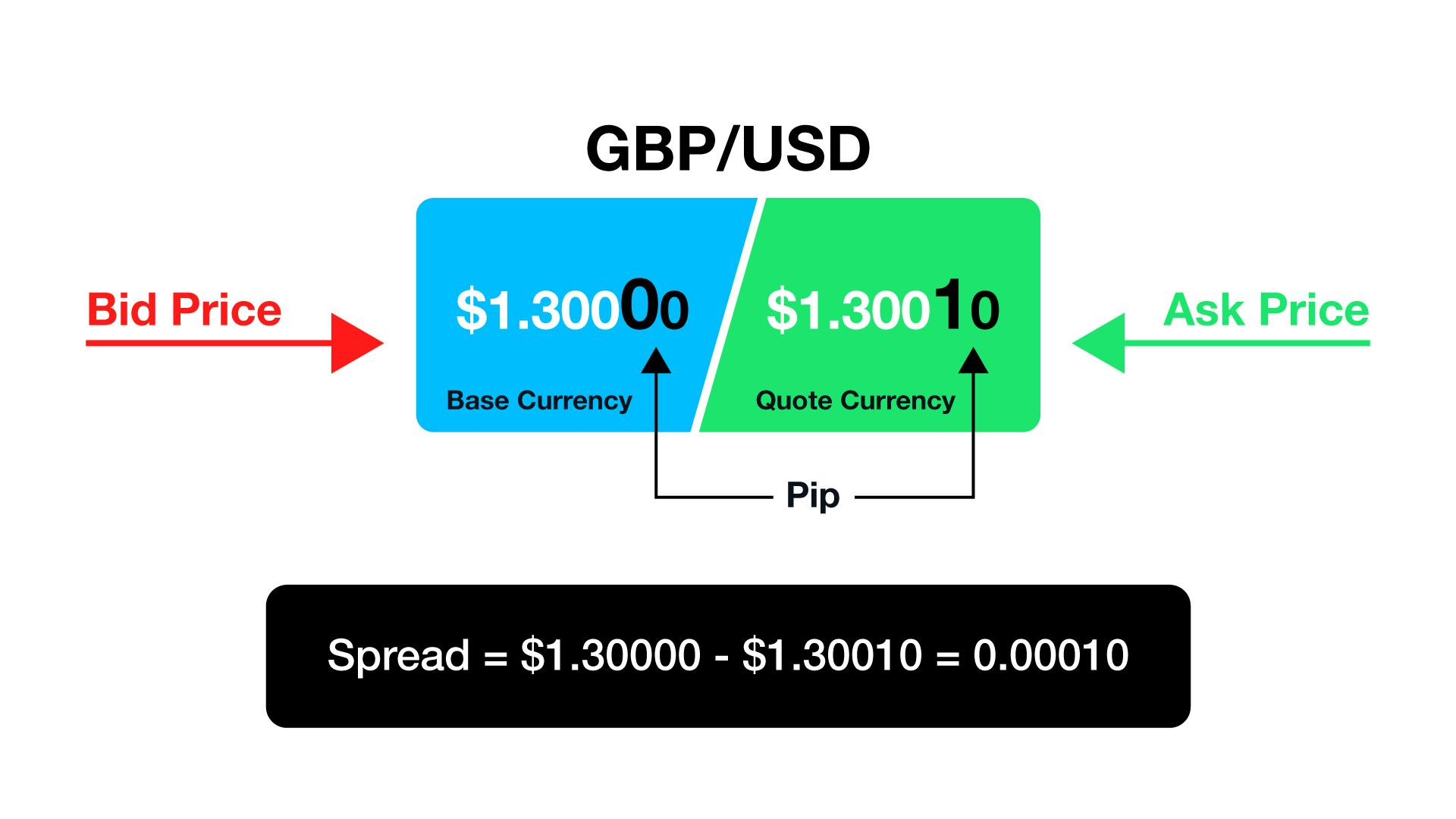
Lesson 3: Forex Spread: What Does Spread Mean in Trading?
Reading Time: 7 minutes
Terminology used in the foreign exchange market (or Forex market) can appear confusing—some even compare it to another ‘language’. However, operating as a successful Forex trader involves awareness of specific terms. By way of an example, ‘spread’ is a frequent talking point amongst market participants, particularly short-term day traders and scalpers.
Forex Spread
The difference, or ‘range’, between bid and ask price levels in a financial market represents what’s referred to as ‘spread’ or ‘bid-ask spread’. This is an important concept as spreads are a primary trading cost for Forex traders: ‘spread cost’.
Organised by way of a two-way quote, bid prices signify willing buyers and ask prices determine willing sellers. Think of these levels as available prices you can engage (buy or sell) with the market immediately, or on the spot. The ask price (bid price) is usually higher (lower) than the underlying market price, as illustrated in figure A.

The bid-ask spread is generally measured in pips (‘pip spread’). Calculation of the bid-ask spread involves subtracting the ask price from the bid price. Aside from fractional pips (often stated as points) a pip is the smallest movement in a currency pair.
As an example, assume GBP/USD has an exchange rate of 1.30000/$1.30010 (the price of a currency pair). The difference between the bid and ask values is 1 pip: the bid-ask spread then is 1 pip. Another example is GBP/JPY with an exchange rate of ¥160.470/¥160.477. In this case, the bid-ask spread is 7 points. As you can see, currency pairs are priced to 5 decimal places with many major currency pairs, but JPY pairs are priced to 3 decimal places.

Traders and investors sell the bid (sell price) and buy the ask (buy price). The base currency (the first currency) in a currency pair is what is bought/sold. The counterparty—your CFD and Forex broker, or sometimes called either the ‘market maker’ or ‘dealer’—provides bid and ask price levels which they derive from liquidity providers. With FP Markets, two account types are available: Raw and Standard. The Raw account type works with a 6 USD commission; traders using this account trade with spreads derived from liquidity providers. The Standard account, however, adds a mark-up to the spread from liquidity providers and operates with zero commission.
There are primarily two types of spreads in FX: fixed or variable. Fixed spreads are usually wider than variable spreads and not dependent on market conditions whereas variable spreads actually fluctuate in accordance with market conditions. Spreads can also either be high (wide) or low (narrow), influenced by a number of factors such as the currency pair’s volatility, the time of day and economic climate. Low spreads mean more liquidity is available in the market: more willing buyers and sellers. A high spread represents a larger difference between the bid and ask price levels: less willing buyers and sellers. Most importantly, of course, a lower spread makes the market cheaper to trade.
Forex Trading Example
Using the same GBP/USD exchange rate of $1.30000/$1.30010, imagine a short-term trader views current prices as an oversold area in the market and elects to execute a long position (buy position). With a bid of $1.30000 and an ask price of $1.30010, the trade will be filled at $1.30010 (prices received are subject to trading conditions).
The trader employs a basic trading strategy, composed of technical analysis. Elements supporting the long trade are trendline support and a horizontal support which has proven an effective base in recent trading. The protective stop-loss order (a basic, yet critical, risk-management tool) is located 25 pips below the entry price. Should price movement trade unfavorably and the currency pair reaches the protective stop-loss order, the position will be liquidated at the bid price to close a long position. A favorable outcome also closes at the bid price.
 Access 10,000+ financial instruments
Access 10,000+ financial instruments Auto open & close positions
Auto open & close positions News & economic calendar
News & economic calendar Technical indicators & charts
Technical indicators & charts Many more tools included
Many more tools included
By supplying your email you agree to FP Markets privacy policy and receive future marketing materials from FP Markets. You can unsubscribe at any time.
Source - database | Page ID - 4354